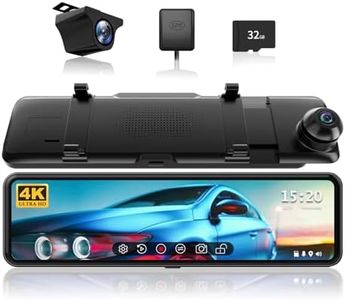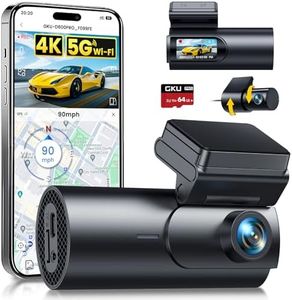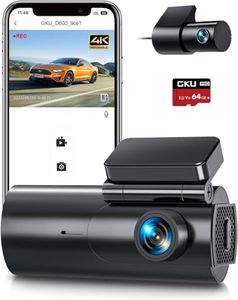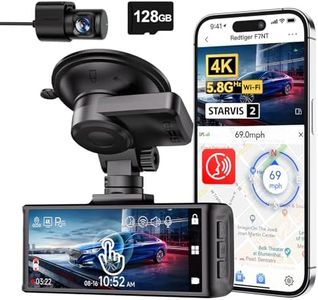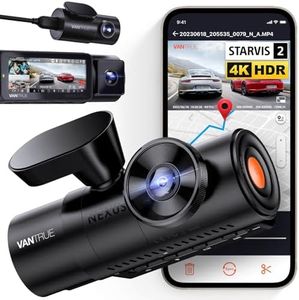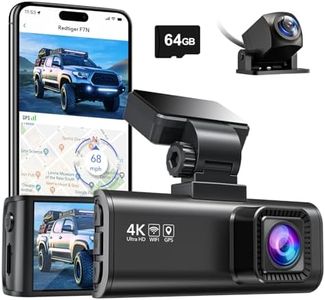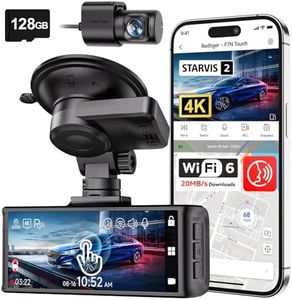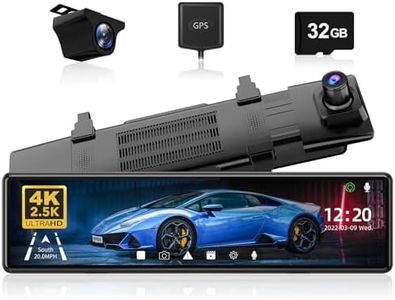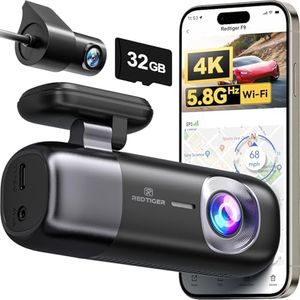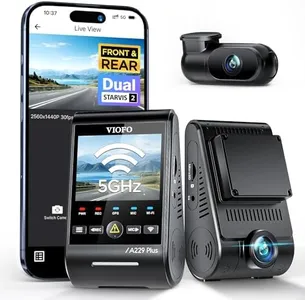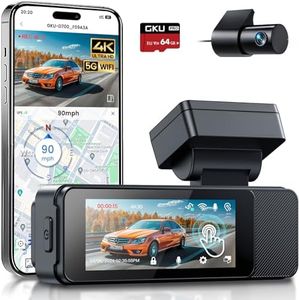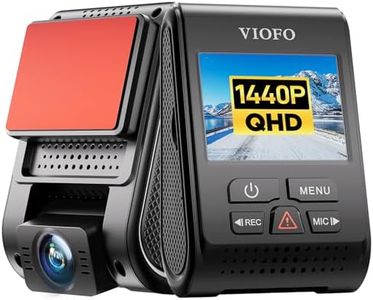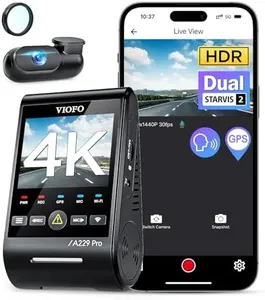We Use CookiesWe use cookies to enhance the security, performance,
functionality and for analytical and promotional activities. By continuing to browse this site you
are agreeing to our privacy policy
10 Best Dash Cams
From leading brands and best sellers available on the web.Buying Guide for the Best Dash Cams
Choosing a dash cam is about finding the right combination of features that match your driving needs and comfort with technology. A dash cam’s main job is to record what’s happening on the road, so reliability and clarity are key. When shopping for a dash cam, focus on how you plan to use it: do you need a simple record of your daily commute, or are you looking for more advanced features like parking surveillance or GPS tracking? Understanding your needs will help you decide which specs are important for you and avoid paying for features you won’t use.Video ResolutionVideo resolution determines how clear and detailed your dash cam footage will be. Most common options are 720p (HD), 1080p (Full HD), and 1440p or 2160p (Quad HD or 4K). Higher resolutions produce clearer videos, making it easier to read license plates and details, especially in case of accidents. If you drive mainly during the day in well-lit conditions and just want basic coverage, 720p might be enough. For regular city drivers or those concerned about capturing small details like license plates, 1080p or higher is recommended. Long-distance or night drivers may benefit from the crispest footage, so consider cams with 1440p or 4K capabilities.
Field of View (FOV)Field of view describes how wide the dash cam lens can 'see.' Typical values range from 100 to 170 degrees. A wider angle captures more of the road and surroundings but can sometimes distort the image at the edges. If you mostly drive on highways or in urban areas, a range between 120 and 150 degrees gives good overall coverage without massive distortion. Super wide angles (160+ degrees) are helpful for capturing more side details, but may not be necessary for all drivers.
Low-Light/Night PerformanceNight performance is all about how well the camera records in dim lighting. This often comes from having a quality sensor, wide aperture, or specific night vision features. If you’re often driving at night or park your car in poorly lit areas, prioritize a cam with good low-light capabilities. If your usage is mostly during daylight hours, this may not be as big of a concern.
Storage and Memory Card SupportDash cams store video on microSD cards, and support for higher-capacity memory means more footage saved before old files are overwritten. Typical cards are 32GB, 64GB, or 128GB and higher. Frequent drivers or those who want to keep recordings longer should look for support for large cards. If you plan to review footage only after incidents, a smaller card is usually enough, since the cam will overwrite old files as needed.
Loop RecordingLoop recording ensures your dash cam will continue capturing video even as the memory card fills up—it simply overwrites the oldest files first. This is an essential function, so just make sure it's present. It helps users that want hassle-free operation and is especially useful if you don’t want to manage footage manually.
G-SensorA G-sensor detects sudden movements, like a crash, and automatically saves and locks the video clip so it can't be erased by the loop recording function. This is crucial for ensuring key moments are preserved as evidence. If you’re prioritizing safety or want assurance that accident footage will be there when needed, this feature is a must.
Parking ModeParking mode records when your vehicle is parked and detects motion or impacts. It’s helpful for catching parking lot bumps, vandalism, or theft. If your car is often left in public places or high-traffic areas, look for a dash cam with a strong parking mode. If you park mostly in a secure home garage, you might not need this feature.
Front and Rear Camera SupportSome dash cams record only from the front, while others have additional cameras for the rear (and sometimes the interior too). Dual cameras capture more comprehensive footage, useful for covering rear-end accidents or monitoring passengers. This is valuable if you want full protection, drive professionally, or have concerns about rear impacts.
GPS FunctionalityGPS-equipped dash cams record your location and speed alongside the video. This can be helpful for legal evidence or tracking routes. If you want location data for insurance or to track business trips, consider a cam with GPS. If these details aren’t important to you, you might skip this feature.
Ease of Installation and OperationSome dash cams are plug-and-play with simple mounts, while others require more complex setup or hardwiring, especially for advanced parking features. If you prefer a DIY install and minimal dashboard clutter, opt for compact models and standard mounts. If you want advanced functions and are comfortable with more setup or seeking a cleaner look, hardwired options may suit you.
